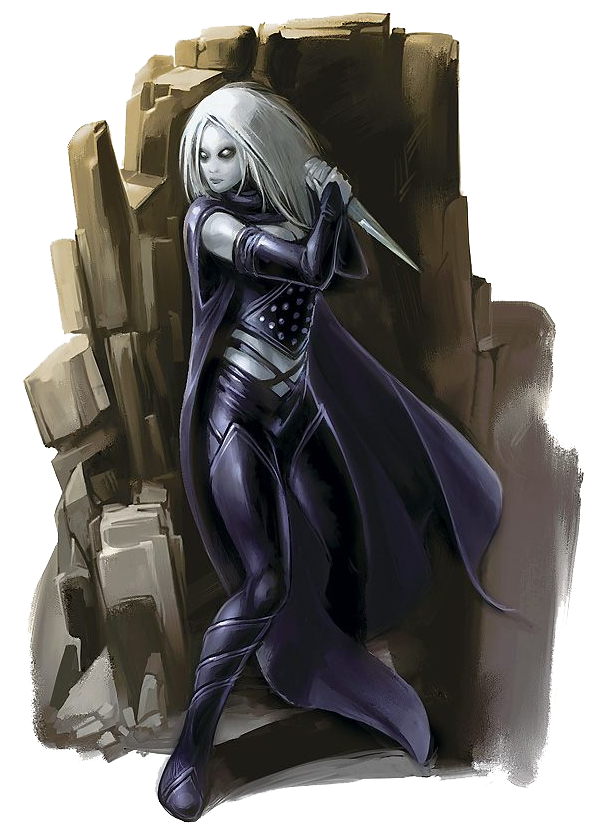


Changeling
Long ago there was a woman named Jes, and she had a hundred children. Her rivals conspired against her, and swore to kill her hundred children. These enemies numbered in the thousands and wielded dark magic, and the Children would never prevail against them. Jes begged the Sovereigns for help, but their only answer was the wind and rain. She sought the aid of the Silver Flame, but its keepers would not hear her. In the depths of her despair, a lonely traveler took her hand. ‘I will protect your children if they follow my path. Let them wander the world. None will know them. They will have no kingdom but the road, and no enemy will find them. They may be shunned by all the world, but they will never be destroyed.’ Jes agreed, and the traveler gave her his cloak. When she draped it over her children, their old faces melted away, and they could be whoever they wanted to be. And so it is until this day. Though the Children are shunned by all, the gift of the traveler protects them still, so long as they follow his path.
—Keith Baker, Dragonmarks: Changelings
Changelings are subtle shapeshifters capable of disguising their appearance. They evolved through the union of doppelgangers and humans, eventually becoming a separate race distinct from either ancestral tree. They do not possess the full shapechanging ability of a doppelganger, but they can create effective disguises at will. This ability makes them consummate spies and criminals, and many changelings live up to that potential.
On the Fringe
Nobody with any sense completely trusts a changeling. Many people, however, have reason to do business with them. Most members of other races treat changelings with extreme caution. Dwarves have little patience for their deceptive and subtle manner. Halflings, on the other hand, enjoy matching wits with changelings, though they are often rivals in certain shady activities.
Members of most other races have a clear answer to the question “Who am I?” Dwarves are clever with stone, stable, and skillful against goblins and giants. Elves are graceful and observant. Half-orcs are strong and gruff. Each of the civilized races has a sense of belonging and the comfort of the society of others like them. They are accepted by and accepting of others of their kind. Not so with changelings.
The mutability of changelings means that they have no one clear place in the world. Most changelings live scattered among communities dominated by other races. These other races view them with suspicion. While a minority group with a stronger sense of self might react to this prejudice by banding together and forming a strong community of their own, changelings are anything but unified. Many changelings view each other with suspicion, too, and are often prejudiced against their own kind.
Different Cultures
Foundlings are changelings raised by other species. This could be due to interspecies romance, or the child could be orphaned or descended from an outcast… or part of a family of foundlings. Foundlings have no knowledge of changeling cultural traditions, and rarely have contact with changelings outside their own families. Foundlings develop a wide variety of philosophies, including those described in Races of Eberron. Some foundlings hide from their true nature, adopting a single face and never changing. Some are sociopaths who prey on those around them, stealing the faces of those they kill. There’s no predicting the beliefs of a foundling, and they can be found anywhere.
Stable changelings live in changeling communities that are recognized and known to the people around them. They are often comfortable wearing the skins they were born in, feeling no need to hide their changeling nature. In the Five Nations, Breland is the only nation with stable changeling communities (notable Dragoneyes in Sharn); other stable communities include Lost in Droaam (from Dungeon #193) and the Gray Tide principality in Lhazaar. Stable communities were founded by tribal changelings, so some traditions overlap; however, many have been abandoned as the members of the community don’t feel threatened.
Tribal changelings cling to traditions stretching back to their origins in Sarlona; they refer to themselves as ‘The Children’. Their culture is defined by the hostility and distrust of outsiders; they hide their communities and their true identities from others, revealing just enough to keep strangers from seeking more. They live in the shadows of the other races, using their wits and their gifts to survive. Most tribal changelings spend their lives in motion, traveling from place to place and never staying long enough to draw unwanted attention. They are seen as tricksters and tinkers, and this reputation is often deserved; tribal changelings don’t consider it a crime to deceive single-skins. The tribes are based in Thrane, Aundair, and Karrnath, but wandering tribals can be found across Khorvaire.
Personas
One of the pillars of tribal culture is the idea of Personas, distinct identities that serve a personal and cultural role. Personas are tools. They have established identities that can be useful to the changelings who use them. It’s a way for the changeling to focus their thoughts and talents. Personas are more than just faces. Mastering a persona is like learning to think in another language. It’s about being that person.
Every changeling can assume any number of faces. As noted above, these are newborns with no history, no fixed behavior; you might use them once and forget about them. Each changeling creates their own personas, creating one or more people they want to be. But they can also inherit personas from other members of their tribe. This involves training, with a living master of the persona teaching the youth how to be that persona.
Many personas are unique, with only one member of the tribe being allowed to use the persona at any time; this prevents someone from doing something with the persona that could spoil it for others. However, there are also personas shared by the tribe. These are generally travelers – merchants, bards, tinkers, mercenaries – people no one knows exceptionally well, so it’s easy for different changelings to play the part without getting tripped up by recent events.
Physical Qualities
Changelings wear many masks, concealing their true identities behind false faces. As shape changers, changelings can appear to be members of any humanoid race, playing the part of a dwarf one day and a dragon born the next. This propensity for disguise leads people to distrust changelings, so most keep their true nature hidden.
Although changelings can adopt any persona, most rely on a few established guises, each with a developed history and a network of friends and acquaintances. These guises provide a changeling with backup identities should one persona become compromised. A changeling who travels frequently might change identities from town to town, swapping genders, appearances, and voices to blend in within each new community.

In true form, a changeling has a startling yet vague appearance. A changeling’s skin is uniformly pale with white or light gray tones. Its oversized eyes are often sunken in dark rings, between which lies a subtle nose. Changelings are slender, bordering on frail. Their hair tends to have light coloring with hints of blue, green, and even pink; pale silver is the most common hair color, followed by platinum and blond. Aside from the hair on their heads, changelings have little or no hair.
Changeling Names
Changeling names are usually monosyllabic and seem to other races more like nicknames than proper names. In fact, changelings collect names and may go by entirely different names in different social circles. They make no distinction between male and female names.
- Male and Female Names: Arthan, Bin, Dox, Fie, Hars, Hes, Jin, Lam, Mish, Nit, Ot, Paik, Ruz, Sim, Toox, Tril, Ven, Vrinn, Yog, Ziki
Changeling Traits
As a changeling, you have the following racial traits.
Ability Score Increase. Your Charisma score increase by 1, and either Intelligence or Dexterity by 1.
Age. Changelings reach maturity at about fifteen years of age, and they live about as long as humans do.
Alignment. Changelings of all alignments exist, but most gravitate toward the neutral alignment. They focus on their own concerns without any meaningful regard for laws or morals. Many have their own code of honor but are also fiercely independent. Some refuse to engage in assassination, while others embrace that path as the most perfect form of the changeling art of deception.
Size. Changelings are built much like humans, but a little leaner. Your size is Medium.
Speed. Your base walking speed is 30 feet.
Duplicity. You are inherently skilled in deception, and though you cannot actually detect thoughts as doppelgangers can, you can intuitively read body language and attitude with surprising accuracy. You are proficient in deception and insight.
Slippery Mind. You have advantage on saving throws against being charmed, and magic can't put you to sleep.
Shapechanger. As an action, you can alter your appearance as though using a disguise self spell that affects your body but not your possessions. This ability is not an illusory effect, but a minor physical alteration of a your facial features, skin color and texture, and size, within the limits described for the spell. The alteration lasts until you change shape again. If you die, you revert to your natural appearance. A true seeing spell reveals her natural form.
Natural Linguist. You can speak, read, and write Common and two other languages of your choice.
Credits & Changelog
Last updated on July 3rd, 2018
This version of the changeling is based heavily on the original version offered in the 3rd edition Eberron Campaign Setting. Parts were also used from the 4E Eberron Player's Guide and the Unearthed Arcana: Eberron.
For race balance I used the guide put together by eleazzaar. Though Shapechange was hard to weigh since an unlimited casting of a first level spell has no precedence.
This was put together by Freewolf (/u/Freewolf). and posted to my Homebrew site for my D&D 5E campaign set in Eberron.
Version 1.0
- Original version
- I used the 3 ECS language for Shangechanger. Using the features of disguise self made more sense the saying it was a polymorph. Disguise self also has specific restrictions on how the shapechange can happen, all that was removed was the ability to change cloths. I think that is a good counter balance to the spell, making it less effective. Additionally I kept the language that true seeing can see through it which also decreases it's effectiveness. So this does not seem overpowered to me.
- Slippery mind was added as an ability. It is a slightly weaker version of fey ancestry.
- Allowed for choice in Dex or Int based as per 4E.
- Added Deception and Insight proficiency based on the language from the ECS.
- Added language on the three different changelings cultures from Keith Baker's Blog.
Artwork
Both pieces of artwork are from Wizard of the Coast 4th edition sources.